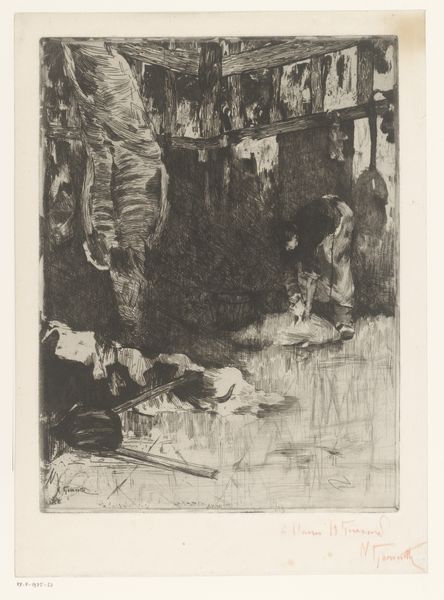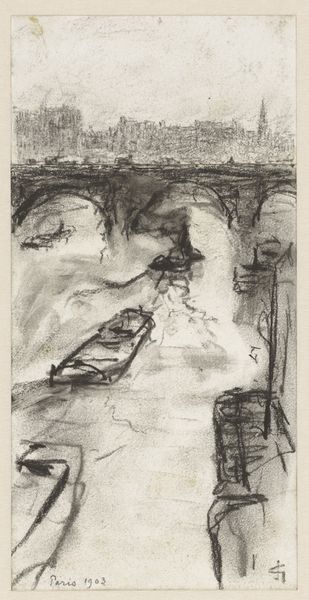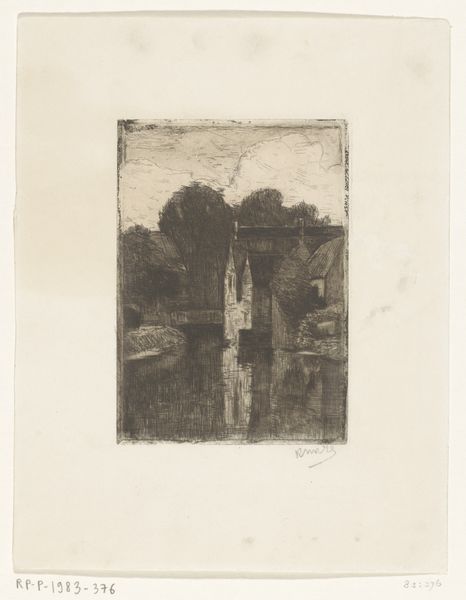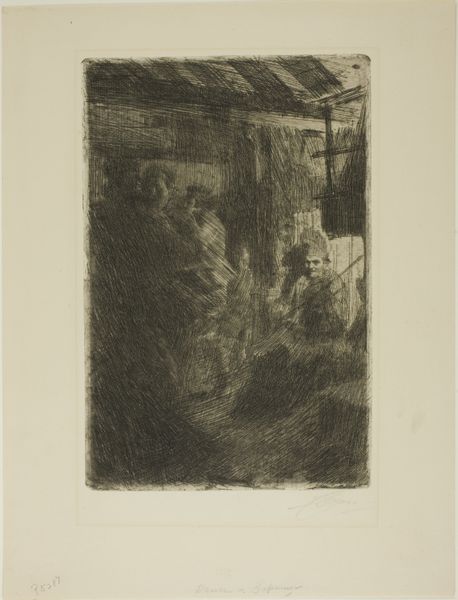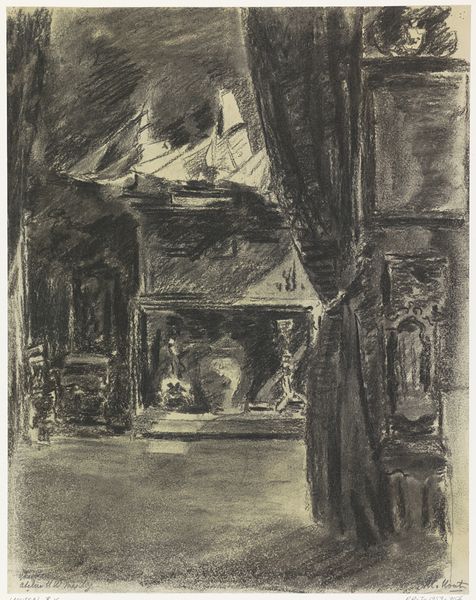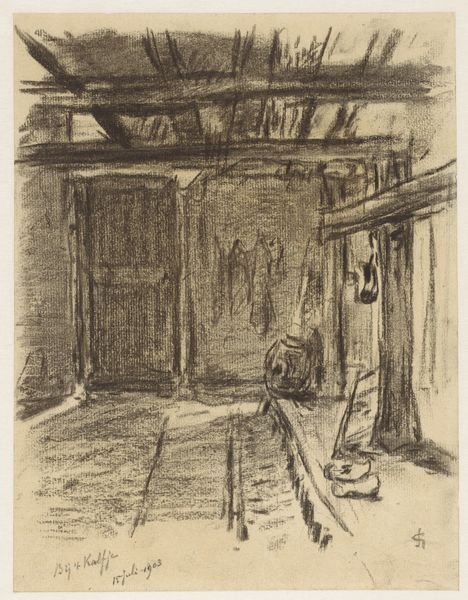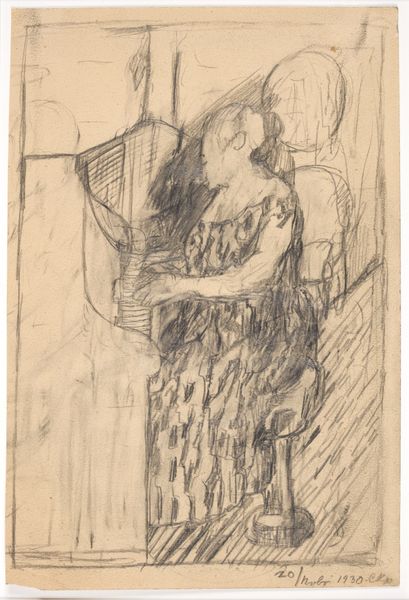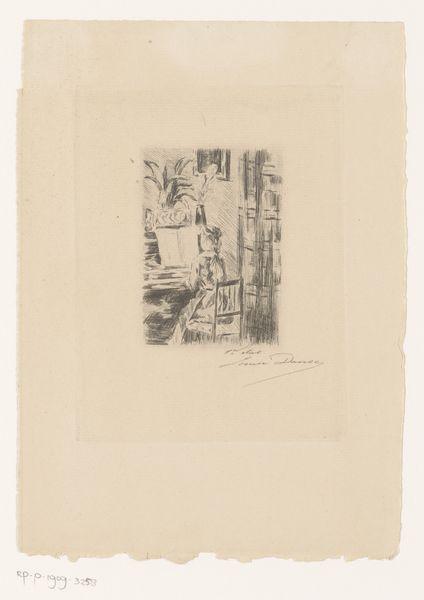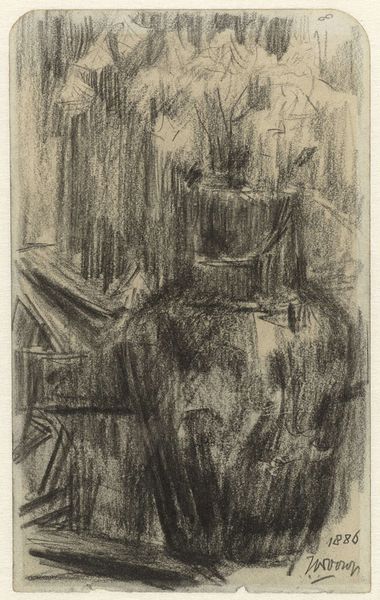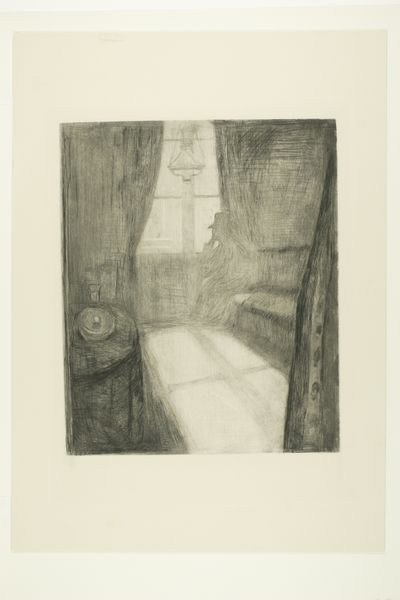
print, etching
art-nouveau
ink drawing
etching
old engraving style
cityscape
realism
Dimensions: height 240 mm, width 160 mm
Copyright: Rijks Museum: Open Domain
Editor: Here we have Auguste Brouet's "Menukaart voor Les Cent Bibliophiles," created in 1911, using etching as a medium. It has such an ephemeral quality. What strikes me are the very apparent details of this little Parisian scene. What can you tell me about the materials and context? Curator: Looking at the etching technique, the lines created through the process really emphasize the labor involved, wouldn’t you say? Brouet isn’t just depicting a scene; he is materially enacting a specific process tied to printmaking traditions. What's compelling here is that this "Menukaart" or Menu, probably mass-produced as ephemeral material for consumption at a dinner party is now held, framed, studied. Does it belong to the same category of value? How does the transformation of function change the object? Editor: That’s a really interesting way to frame it – pun intended! It’s no longer functional as a menu; its function now becomes art. Curator: Exactly! This shift challenges the traditional boundaries between "high art" and functional or commercial prints. Look at the Art Nouveau style - how is the consumption and the marketing of taste embedded within the very creation and reception of such prints? Think about the resources, both human and material, involved in its original creation as an announcement for bibliophiles versus how it's consumed now. Editor: I hadn’t thought of it that way. I guess it’s easy to forget how art, even something that looks 'old', is embedded within very specific economic systems of production and circulation. Curator: Indeed, the value lies not just in the image but in unpacking the layers of production, circulation, and consumption intertwined within this seemingly simple etching. What did the bibliophiles make of its appeal? Editor: This perspective gives me a totally different lens through which to examine art. It's more than just aesthetic appreciation; it is like reading the story of production!
Comments
No comments
Be the first to comment and join the conversation on the ultimate creative platform.
